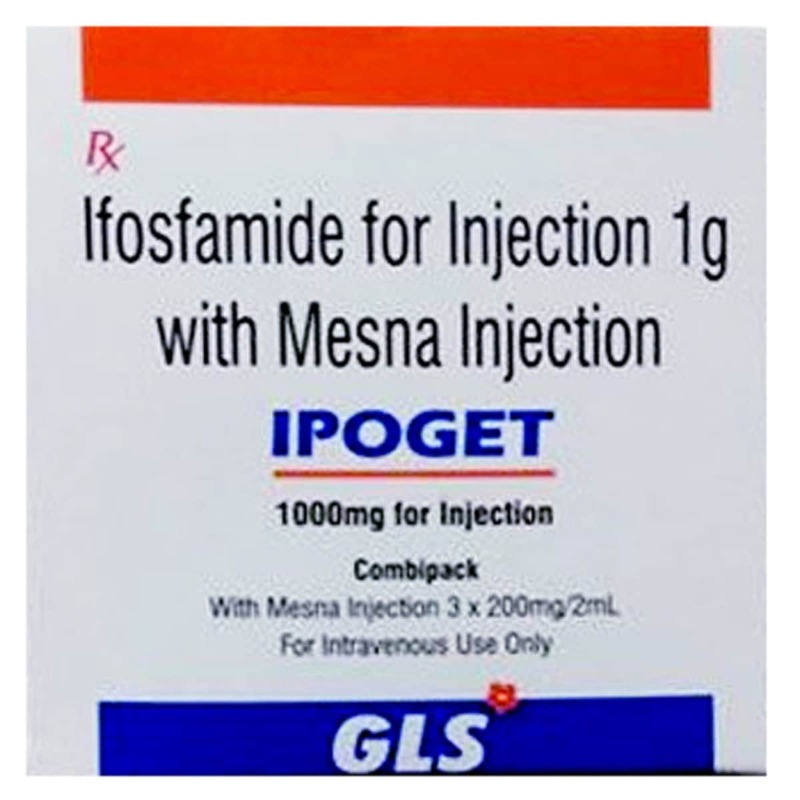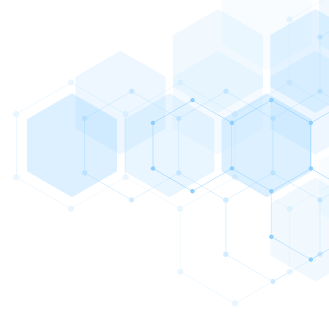DESCRIPTION
Ifosfamide
Mechanism of Action
• Inactive in its parent form.
• Activated by the liver cytochrome P450 microsomal system to
various cytotoxic metabolites, including ifosfamide mustard and
acrolein.
• Cytotoxic metabolites form cross-links with DNA resulting in inhibition
of DNA synthesis and function.
• Cell cycle–nonspecific agent, active in all phases of the cell cycle.
Mechanism of Resistance
• Decreased cellular uptake of drug.
• Decreased expression of liver P450 activating enzymes.
• Increased expression of sulfhydryl proteins, including glutathione
and glutathione-associated enzymes.
• Increased expression of aldehyde dehydrogenase, resulting in
enhanced inactivation of drug.
• Enhanced activity of DNA repair enzymes.
Absorption
Well-absorbed by the GI tract with a bioavailability of nearly 100%. However,
only IV form is available commercially because oral form is highly neurotoxic.
Distribution
Widely distributed into body tissues. About 20% of drug is bound to
plasma proteins.
Metabolism
Extensively metabolized in the liver by the cytochrome P450 system.
Activated at a four-fold slower rate than cyclophosphamide because of lower
affinity to the liver P450 system. For this reason, about four-fold more drug
is required to produce equitoxic antitumor effects with cyclophosphamide.
The half-life of the drug is 3–10 hours for standard therapy and up to 14
hours for high-dose therapy. Approximately 50%–70% of the drug and its
metabolites are excreted in urine.
Indications
1. Recurrent germ cell tumors.
2. Soft tissue sarcoma, osteogenic sarcoma.
3. Non-Hodgkin’s lymphoma.
4. Hodgkin’s lymphoma.
5. Non–small cell and small cell lung cancer.
6. Bladder cancer.
7. Head and neck cancer.
8. Cervical cancer.
9. Ewing’s sarcoma.
Dosage Range
1. Testicular cancer: 1200 mg/m2 IV on days 1–5 every 21 days, as part
of the VeIP salvage regimen.
2. Soft tissue sarcoma: 2000 mg/m2 IV continuous infusion on days
1–3 every 21 days, as part of the MAID regimen.
3. Non-Hodgkin’s lymphoma: 1000 mg/m2 on days 1 and 2 every
28 days, as part of the ICE regimen.
4. Head and neck cancer: 1000 mg/m2 on days 1–3 every 21–28 days, as
part of the TIC regimen.
Drug Interaction 1
Phenobarbital, phenytoin, and other drugs that stimulate the liver P450
system—Increase the rate of metabolic activation of ifosfamide to its toxic
metabolites resulting in enhanced toxicity.
Drug Interaction 2
Cimetidine and allopurinol—Increase the formation of ifosfamide
metabolites resulting in increased toxicity.
I Drug Interaction 3
Cisplatin—Increases ifosfamide-associated renal toxicity.
Drug Interaction 4
Warfarin—Ifosfamide may enhance the anticoagulant effects of warfarin.
Need to closely monitor coagulation parameters, PT and INR.
Special Considerations
1. Administer prophylactic antiemetics to avoid nausea and vomiting.
2. Use with caution in patients with abnormal renal function. Dose
reduction is necessary in this setting. Baseline CrCl must be
obtained, and renal function should be monitored during therapy.
3. Uroprotection with mesna and hydration must be used to prevent
bladder toxicity. Pre- and post-hydration (1500–2000 mL/day) or
continuous bladder irrigations are recommended to prevent hemorrhagic
cystitis. Important to monitor urine for presence of gross and/
or microscopic hematuria before each cycle of therapy.
4. Monitor coagulation parameters, including PT and INR, when
ifosfamide is used concurrently with warfarin, as ifosfamide may
enhance its anticoagulant effects.
5. Contraindicated in patients with peptic ulcer disease, severe liver
disease, and/or cardiac disease.
6. Pregnancy category D. Breastfeeding should be avoided.
Toxicity 1
Myelosuppression is dose-limiting. Mainly leukopenia and to a lesser
extent thrombocytopenia. Nadir occurs at 10–14 days with recovery in 21 days.
Toxicity 2
Bladder toxicity can be dose-limiting and manifested by hemorrhagic
cystitis, dysuria, and increased urinary frequency. Chronic fibrosis of bladder
leads to an increased risk of secondary bladder cancer. Uroprotection with
mesna and hydration must be used to prevent bladder toxicity.
Toxicity 3
Nausea and vomiting. Usually occurs within 3–6 hours of therapy and
may last up to 3 days. Anorexia is fairly common.
Toxicity 4
Neurotoxicity in the form of lethargy, confusion, seizure, cerebellar ataxia,
weakness, hallucinations, cranial nerve dysfunction, and rarely stupor and
coma. Incidence may be higher in patients receiving high-dose therapy and
in those with impaired renal function.
I Toxicity 5
Alopecia is common (.80%). Skin rash, hyperpigmentation, and nail
changes are occasionally seen.
Toxicity 6
Syndrome of inappropriate antidiuretic hormone secretion (SIADH).
Toxicity 7
Amenorrhea, oligospermia, and infertility.
Toxicity 8
Mutagenic, teratogenic, and carcinogenic.
SPECIFICATION


Login To Comment